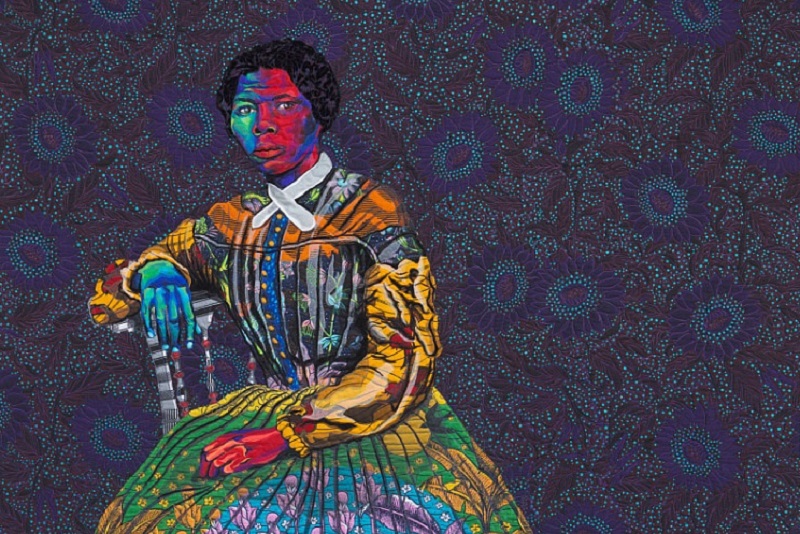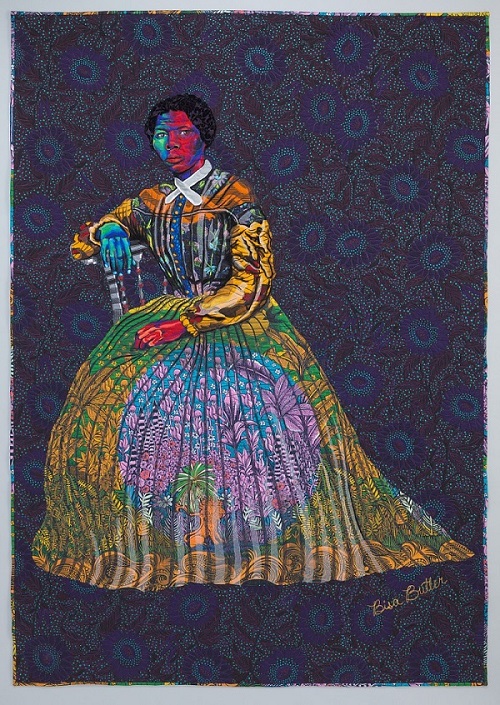University Libraries

Harriet Tubman: Bicentennial Tribute
By Maureen Schlangen
March 2022 marks the approximate* 200th anniversary of the birth of abolitionist, Underground Railroad conductor, Union spy and freedman’s advocate Harriet Tubman.
As Women’s History Month comes to a close, the Libraries give tribute to this remarkable historical figure who, born into slavery as Araminta Ross in Dorchester County, Maryland, is considered the first Black woman to serve in the U.S. military. Some facts about this American patriot:
- At age 12, in an attempt to curtail the beating of a fellow slave who had attempted escape, she sustained a severe blow to the head and suffered debilitating headaches and narcolepsy the rest of her life.
- After years as a field slave, she escaped in 1849. She returned to the South more than a dozen times to free some 200 slaves, and despite rewards of $40,000 offered for her capture — dead or alive — she was never caught.
- As a Union spy and scout, Tubman often transformed herself into an aging woman. She would wander the streets under Confederate control and learn from the enslaved population about Confederate troop placements and supply lines. 1
- Tubman supported the abolitionist John Brown in his October 1859 raid on the arsenal in Harpers Ferry, Virginia; however, the raid did not succeed. Brown was captured and tried for treason, murder and slave insurrection and put to death. 2
- From 1862 to 1865 Tubman was a scout, nurse and laundress for Union forces in South Carolina. Her familiarity with towns and transportation routes in the South — gained during her work with the Underground Railroad — was an asset to Union military commanders. 3
- Following the Civil War, Tubman became involved in various other causes, including women’s suffrage. Soon before she died in 1913, Tubman is said to have told friends and family, “I go to prepare a place for you.” She was buried with military honors in Fort Hill Cemetery in New York. 4 The quilt shown in the gallery below, by artist Bisa Butler, bears this quotation as its title.
- In 2016, the U.S. Treasury Department announced that Harriet Tubman’s face will replace Andrew Jackson’s on a new $20 bill. However, those may not be available until about 2028. 5
Related resources available through the University Libraries
- Oxford African American Studies Center: This database contains more than 20,000 articles, as well as primary sources including slave narratives, speeches, and patent records for African American inventors. Read about it on the Libraries blog.
- Harriet Tubman Underground Railroad National Monument, Maryland: Document of the National Park Service, U.S. Department of the Interior.
- Women and Social Movements in the United States, 1600-2000: Organized around the history of women in social movements in the United States between 1600 and 2000, this database includes 124 document projects and archives with more than 5,100 documents and 175,000 pages of additional full-text documents. It also includes book, film and website reviews; notes from the archives; and teaching tools.
* A birth record is not available for Harriet Tubman; her birth year is estimated to have been between 1820 and 1822.
Sources
- Michals, Debra. "Harriet Tubman." National Women's History Museum, 2015.
- Bordewich, Fergus M. "John Brown's Day of Reckoning." Smithsonian Magazine, October 2009.
- “Harriet Tubman: American Abolitionist.” Encyclopedia Britannica, 2022.
- Harriet Tubman Historical Society
- Linskey, Annie. “When Will Harriet Tubman Adorn the $20 bill?” Washington Post, June 3, 2021.
— Maureen Schlangen is the e-scholarship and communications manager in the University Libraries and a member of the University Libraries Diversity and Inclusion Team.

'I Go to Prepare a Place for You'
A quilted and appliquéd textile portrait of Harriet Tubman by Bisa Butler, based on the carte-de-visite photograph portrait of Tubman by Benjamin F. Powelson (Collection of the Smithsonian National Museum of African American History and Culture, purchased through the American Women's History Initiative Acquisitions Pool, administered by the Smithsonian American Women's History Initiative)
'I Go to Prepare a Place for You'

